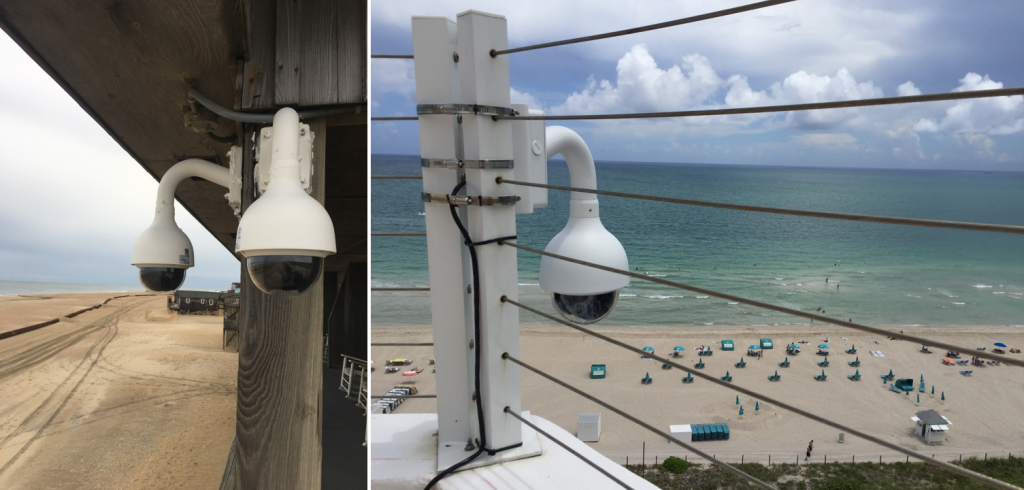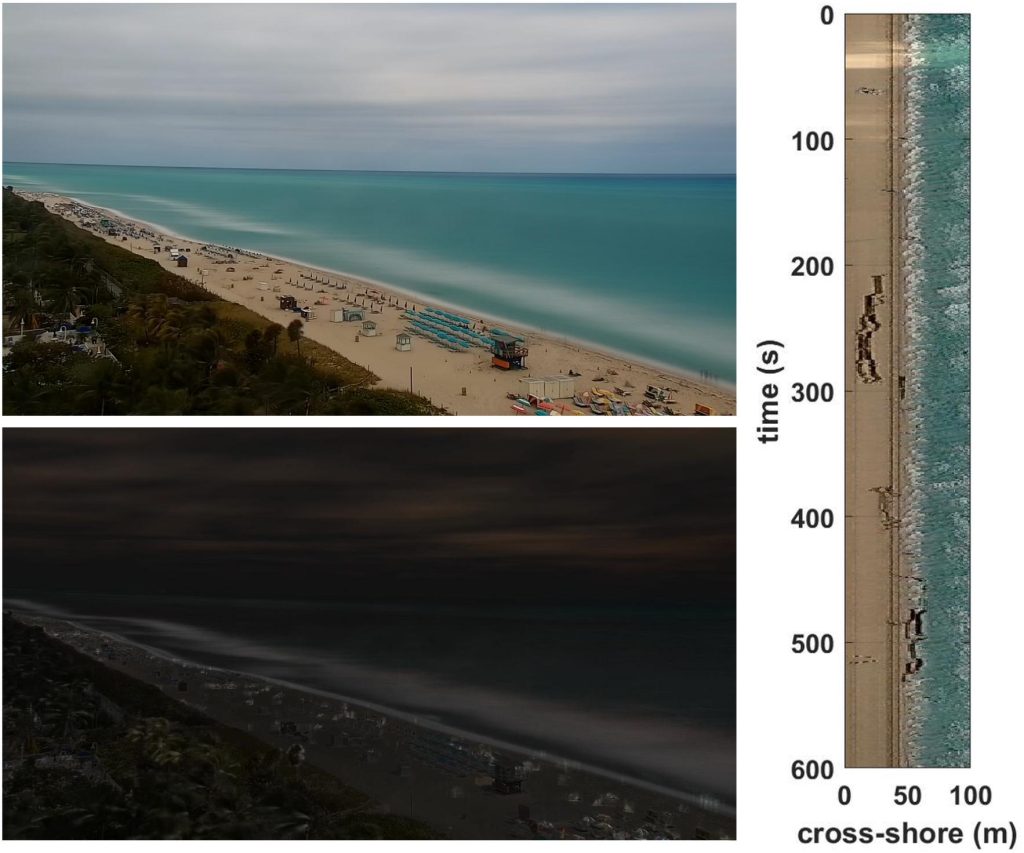
Two cameras installed for the webcam network. The left is located at Buxton, NC and the right is located in Miami, FL. Image Credit: Surfline, Inc.

Example of a product using web camera data. Time-average (top), time-variance (bottom) and time-stack (right) images are calculated from video segments from the Miami, FL camera. These products support identification of morphological features, shoreline position and wave runup and overwash. Credit: Dusek et al., 2019.
SECOORA was recently awarded a $1.1 million grant to launch a sustained network of low-cost webcams throughout the Southeast, which will build off of a successful pilot project. Webcams are a low cost coastal observing platform transforming how environmental monitoring is conducted. Video data is being used for applications related to transportation and commerce, preparedness and risk reduction, and stewardship of coastal resources.
The project, Webcams for Coastal Observations and Operational Support (WebCOOS), will develop a webcam coastal observing network for quantitative scientific analysis, public safety, and resource management for coastal municipalities. To accomplish this, standardized data processing and management methodology will be established to provide stakeholders such as lifeguards, emergency managers, and coastal managers actionable information from webcam video.
“SECOORA is excited to be awarded NOAA funding to transition our successful pilot project, the Web Camera Applications Testbed, to a sustained network. Webcam data has demonstrated value to address significant gaps in the nation’s ability to monitor and accurately forecast various weather, ocean, ecological and public health hazards.”
– Debra Hernandez, SECOORA Executive Director
This project will result in immediate benefits to partners by filling gaps in critical coastal observations. For instance, webcam data will help NOAA validate and improve their rip current forecast model, and USGS relies on webcam observations of wave run-up for research on beach erosion, overwash, and inundation. In both of these cases and others, there are extremely limited coastal observations available to address these needs.
Project Funding
This project is funded by the NOAA U.S. Integrated Ocean Observing System’s (IOOS®) Ocean Technology Transition grant.
Project Partners
Related news

New High Frequency Radar at the Dry Tortugas National Park Improves Ocean Surface Current Measurements Across the Straits of Florida
A new CODAR Low-Power SeaSonde HFR has been deployed by the University of South Florida at Fort Jefferson on Garden Key to measure surface currents to improve understanding and prediction of the Gulf of Mexico Loop Current.

President Biden Proposes Significant Budget Cuts to IOOS for 2025
President Biden’s recent 2025 budget proposal slashed the funding allocated for the Integrated Ocean Observing System (IOOS) by 76%, which would effectively shut down coastal and ocean observing efforts.

Webinar: NOAA Resources to Help Coastal Communities Understand Flood Risk
Join us Wednesday, March 27th at 12 PM Eastern Time for SECOORA's Coastal Observing in Your Community Webinar Series to hear from Doug Marcy with the NOAA Office for Coastal Management.